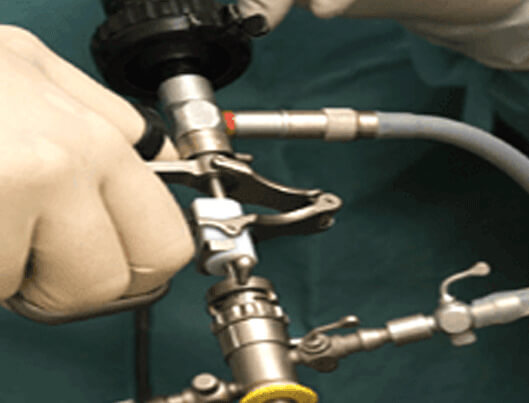Lasers In Urology

The laser techniques can be applied in many ways, such as to remove cancerous and non cancerous growths in the bladder, ureter and kidneys (for example, transitional cell carcinoma which are small in size), to remove urinary stones that cause pain, infection and/or obstruction, and to stop bleeding and remove unwanted scar tissues which are blocking the patient’s urinary tubes. Patients who undergo laser surgery will, in turn, experience therapeutic outcomes. The biggest advantage of these systems is that they allow surgeons who perform minimally invasive urological surgery through scopes (endourology) and laparoscopy/robotic (keyhole surgery) to achieve excellent patient benefits without open surgery.
With more results from worldwide experiences being published every month, doctors are now seeing that more difficult medical problems can be successfully tackled without incisions via scopes and/or very small incisions via keyhole surgery.
Post-surgical recovery time has been shortened considerably and patients endure significantly less pain and discomfort. Take, for example, Laser TURP, a procedure we performed on a non cancerous prostate growth which had failed medical therapy; we can now perform the procedure with minimal bleeding and patients need to stay less than 24 hours in hospital.
There are, however, disadvantages, one of which is the initial high start-up capital required to purchase the systems. But experience shows that for the most part, the cost will be recovered as more and more patients would like to reap the benefits of laser-related surgery. The commonest danger of laser surgery is mainly the potential damage to the scope or instrument used to deliver the laser to the site of the surgery while the commonest inconvenience is the mechanical breakdown of the laser system, resulting in the need to stall the surgical procedure. This is, thankfully, uncommon.
On a whole, the benefits of these laser systems outweigh the downsides. For me personally, I have found that the lasers have helped me considerably in performing my subspecialty in minimal invasive surgery, which is built on my two years of fellowship training in the US and my 20 years of experience in the largest tertiary teaching hospital in Singapore.
Location
Mount Elizabeth Medical Centre,
Singapore 228510
Number
| Tel | |
| Tel | |
| Fax | : (65) 6838 1216 |
| 24-hour answering service |
Address
Hours
Mon-Fri | : 9:00am - 1:00pm 2:00pm - 5:00pm |
Sat | : 9:00am - 12:00pm |
Sun/PH | : Closed |





